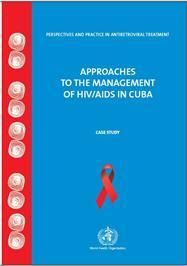This report is a case study of Cuba’s response to HIV. The report presents the background information on Cuba’s initial response to the HIV/AIDS epidemic, the establishment of AIDS sanatoria from 1986-1993 for taking care of HIV positive persons, the institution of an ambulatory care system for HIV treatment of people who want to remain at home, and introduction of antiretroviral (ART) treatment in 1996. Cuba began producing its own antiretrovirals in 2001, and 100% ART treatment was achieved in 2003. The report lists the drugs and regimens used in Cuba and the criteria to initiate ART. It explains the Cuban health care system, a comparison of the opportunistic infections before and after introduction of ART therapy, the adverse effects of ART, adherence, and prevention issues.
Publication Date:
2004
ID:
33523
- HIV and AIDS


